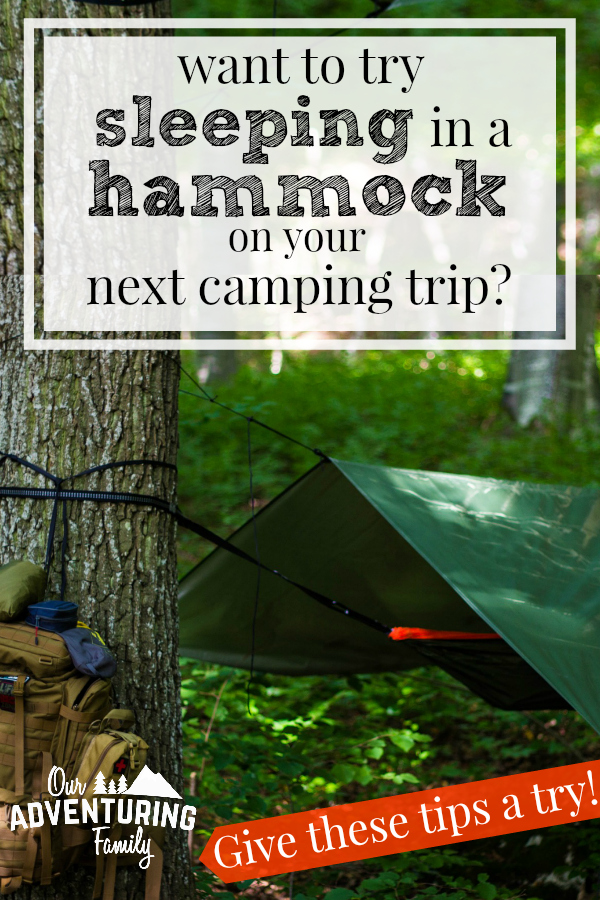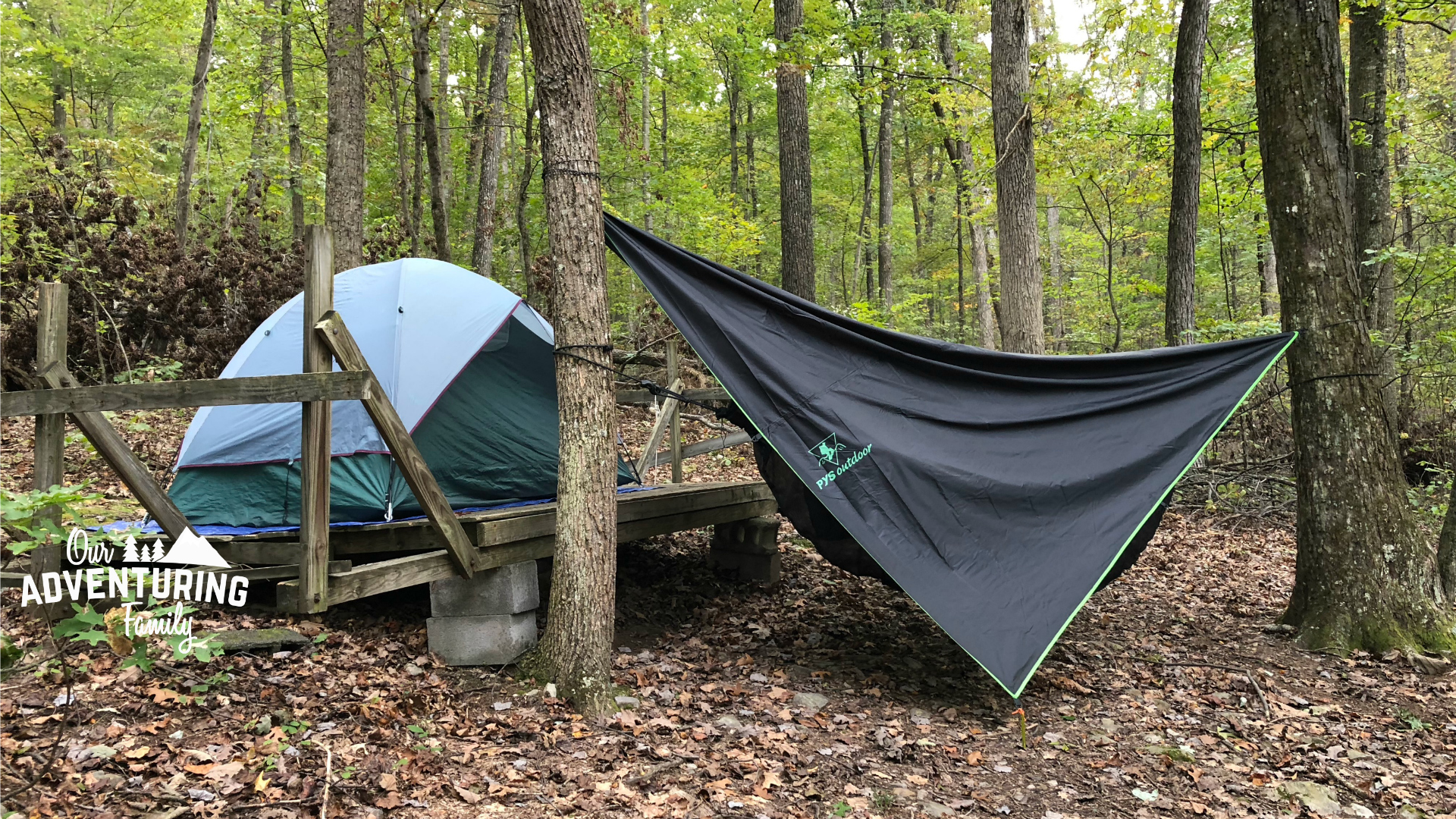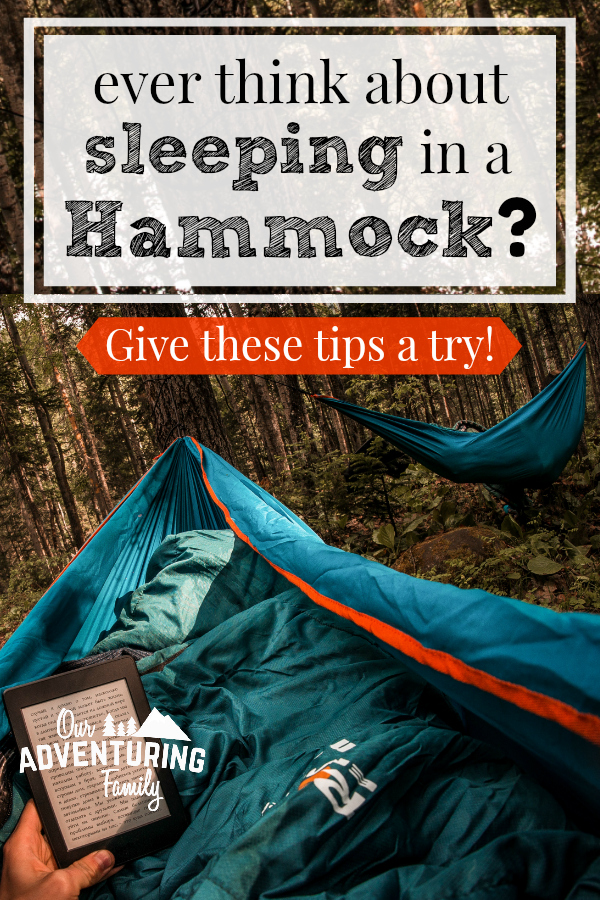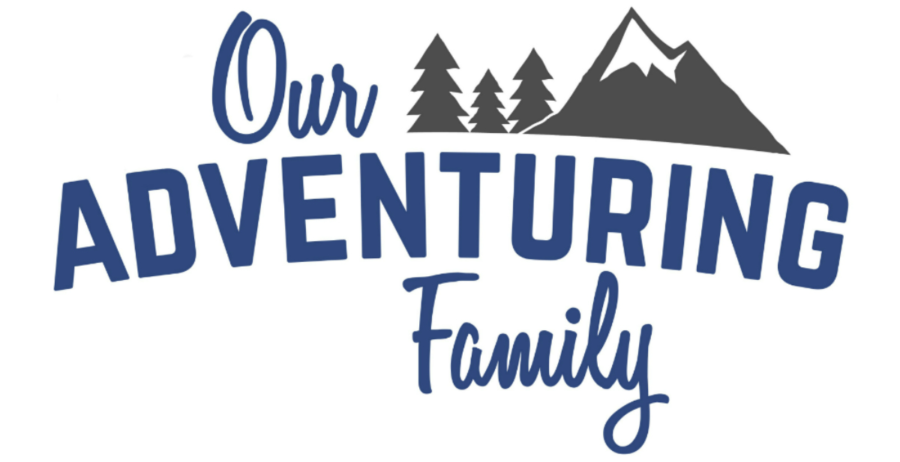This post may contain affiliate links. As an Amazon Associate I earn from qualifying purchases, but there is no additional cost for you. Please see my Disclosure page for more information.
Ever thought about sleeping in a hammock? Hammocking is growing in popularity, and for good reason. It’s gentler on the body than sleeping on the hard ground and is easily portable. It’s also a great option for teenagers who want to stretch out more than they can in an RV or trailer while sleeping. If you’ve been thinking about giving it a try, now is a great time. With a little planning, unpredictable spring weather won’t throw a wrench in your night’s sleep.
My recent experience with hammocking
Last fall I had the opportunity to do some hammocking while camping at Wood Badge. The first night went well, though I never quite got in the optimal position (more on that in a minute). I slept pretty well, though I did wake up with a headache because of not being positioned properly. The second night I was going to try again, but freezing rain and high winds nixed that idea and I retreated to my tent, which was also housing my gear. Weather doesn’t have to derail your plans, but I wasn’t going to mess with that combination of high winds and freezing rain.
Despite the issues getting in the proper position, it was a fun adventure. If the weather is cold you will end up with a lot of layers to help you stay warm. Those layers complicate what’s supposed to be a simple experience, but they also make it so it’s not miserable. There’s not a lot worse than being wet, cold, or both while trying to sleep. Regardless of the weather, if you plan ahead, you can have a good night’s sleep. Keep reading to find out how to be prepared.

What you need for a successful hammocking experience
Click any of the pictures to go to the product on Amazon. I’ve linked to products we’ve used, or a similar one if what we have is no longer available.
Hammock
We have one that we found at Costco a couple years ago, but there are many good ones available. Just make sure you don’t get the kind with the wood spreader bars- you’ll tip out the first time you roll over in your sleep.
Sleeping pad
I used one that we’ve had for a year or so, but again, there’s many good options available. Mine could be inflated with a few puffs of air, but a closed-cell foam pad would work as well.
A sleeping bag or blanket
It was cold enough that I used a sleeping bag rather than a blanket, but if warmer weather is in the forecast, a blanket should be fine. I used the intermediate (summer weight) bag from my husband’s Army sleep system because it packed smaller than our other sleeping bags and space was an issue.
Bug netting
Some hammocks come with bug netting already attached. If we didn’t have a hammock already, I would bought one with an attached bug netting. If you don’t mind bugs or there aren’t many in your area, you could skip the netting. We have lots of bugs here in Virginia, so it wasn’t an optional item for me.
The netting I bought drapes over the hammock and is kept aloft by side ropes that tie near the hammock attachments. It’s large enough to completely enclose the hammock with netting hanging under the hammock. There’s a zipper for climbing in and out of the hammock. I liked the full coverage, but I think the excess netting hanging below made it more awkward to climb in and out. This could have been partially operator error. I’m short and had a hard time tying the ropes up high enough on the trees.
Rain fly if rain is in the forecast
I also bought a rain fly to go over everything because we have had a really wet year and never know when it will rain. I thought about using a tarp we already have, but tarps don’t fold up as small, and space was an issue. The rain fly was lighter weight, packed smaller, and came with the ropes and stakes for attaching it properly.
What you should add if the weather is colder
A hammock blanket under the hammock
It was a cold weekend, with temps below freezing, so I’m really glad I brought a blanket to attach under my hammock.
It wasn’t a hammock blanket per se, but I’m short, so it worked, it can be used for other things, and it was cheaper than an actual hammock blanket. I did sew little loops in the corners to tie it around the hammock, but they’re unobtrusive and won’t interfere with other uses. I wasn’t sure we’d use a hammock blanket again, and didn’t want to spend the money on a single-use product. If you plan to use one on more occasion, though, it would be worth the money.
A warmer sleeping bag
My sleeping bag wasn’t rated to below freezing, so I brought a small packable down blanket as an extra layer inside my sleeping bag. The temps were below freezing at night, but I was warm and toasty all night.
How to sleep in a hammock without becoming a human pretzel
As anyone who’s spent any time in a hammock will tell you, it’s not always comfortable. There is an art to sleeping in a hammock so you don’t wake up feeling like you’ve been folded in half all night.
- Set everything up properly from the get-go. Set up the hammock, the bug netting, and the rain fly, if you’re using one. Arrange your sleeping pad and sleeping bag or blanket in the hammock in a diagonal position. If it’s cold, attach your hammock blanket to the outside of the hammock for extra insulation.
- The trick to a comfortable night’s sleep is to sleep diagonally in the hammock with a sleeping pad. This sounds easier than it really is, so be prepared to do some wiggling around to get in the best position.
I had a hard time getting into that diagonal position, but I was also wearing my fracture boot at the time, so I wasn’t the most coordinated person. I’m not super coordinated even when not wearing a boot, so it definitely didn’t help the situation.

I did feel closer to nature with just a rain fly over me. I could clearly hear all the sounds of the woods around us, including the loud, odd, repeating call that woke me up in the middle of the night. The next morning I told some of the others more familiar with the area about the sound. We decided it was a barred owl, whose call sounds a bit like “who cooked for you?”
Have you slept in a hammock? Any tips to share? Have any teenagers who want to give it a try on your road trip this summer?










